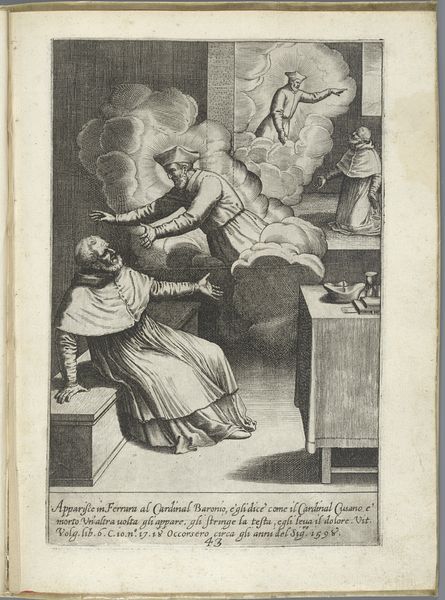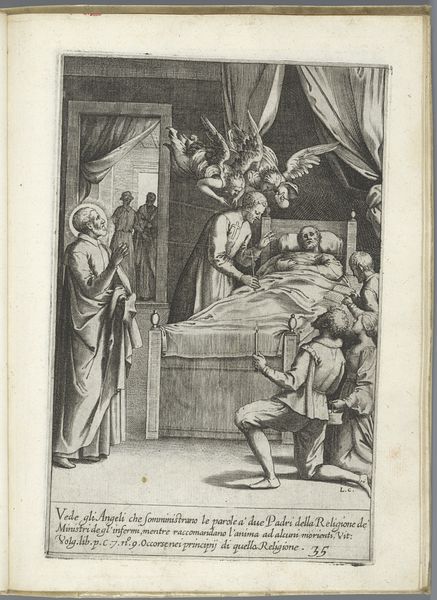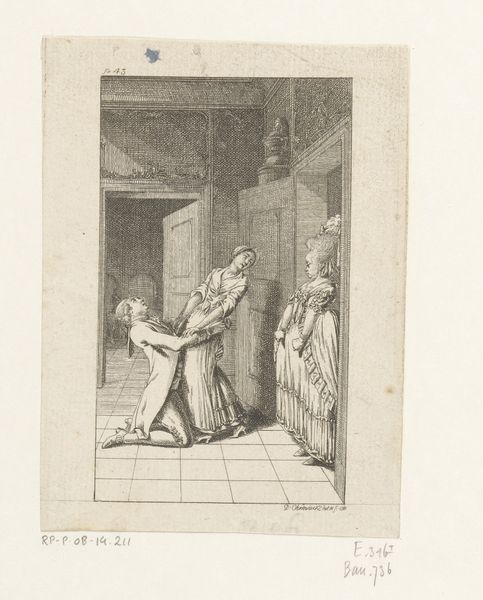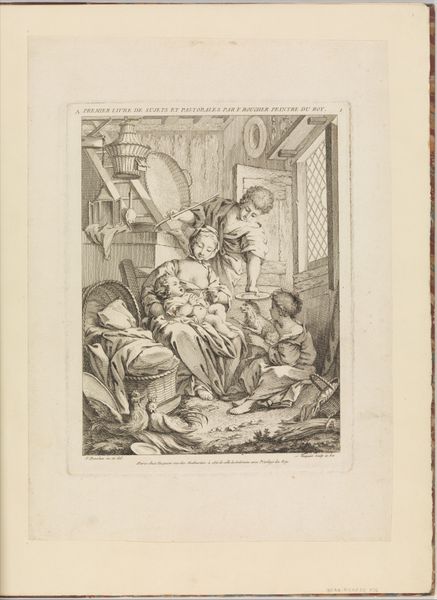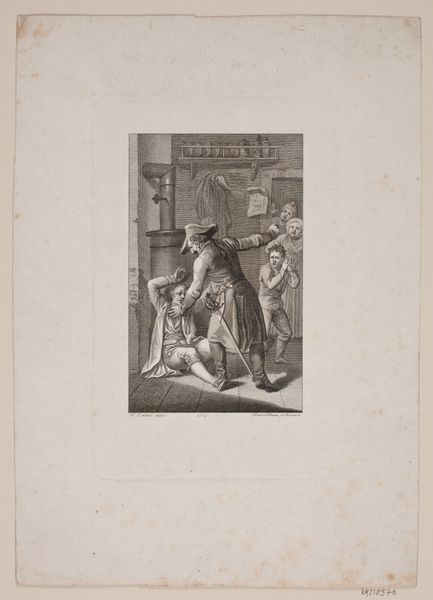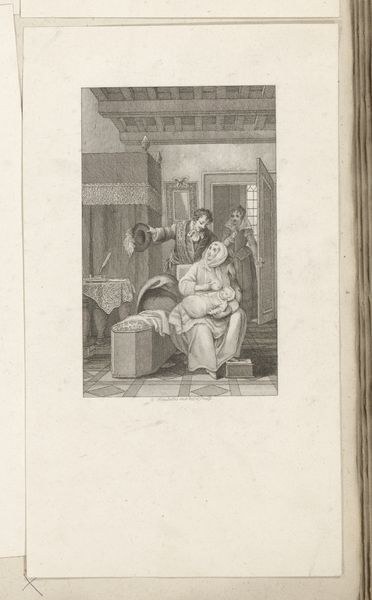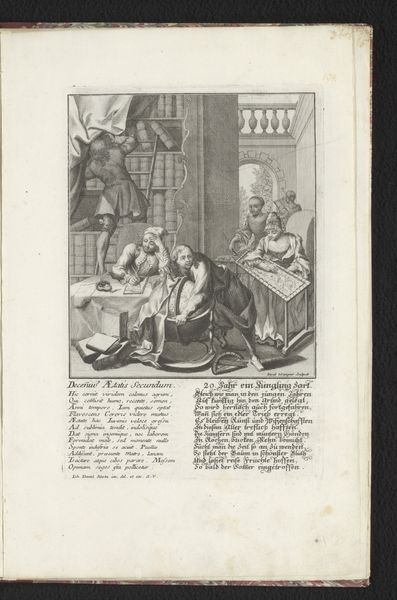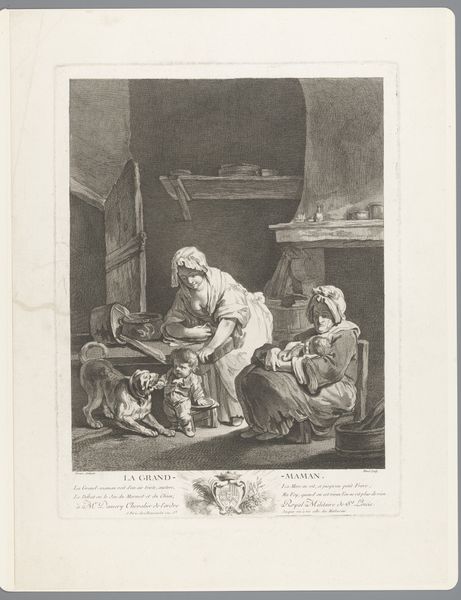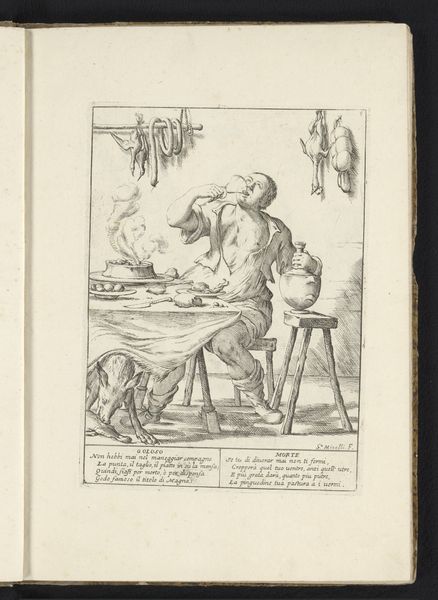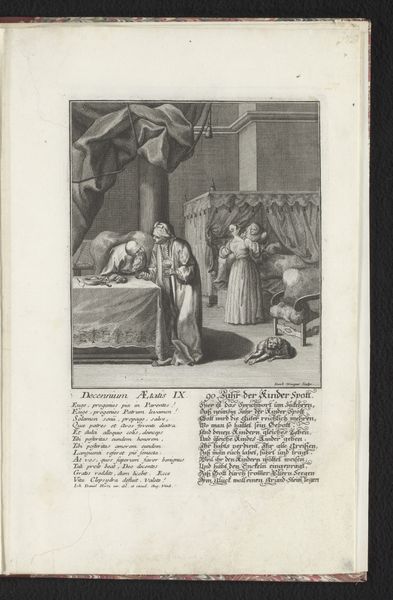
print, pen, engraving
#
baroque
#
ink paper printed
# print
#
coloured pencil
#
pen
#
history-painting
#
italian-renaissance
#
engraving
Dimensions: height 228 mm, width 150 mm
Copyright: Rijks Museum: Open Domain
Curator: Here we have Luca Ciamberlano's print, "Filippo Neri Appears to Cesare Baronio," dating from 1630 to 1641. It’s currently held here at the Rijksmuseum. Editor: It's… striking. The starkness of the engraving emphasizes the contrasting realities: Baronio, weighed down at his desk, and Neri floating amidst billowing clouds. The lines feel incredibly deliberate, almost etched with a sense of urgency. Curator: Indeed. The piece speaks to the complexities of Counter-Reformation Rome. Ciamberlano, deeply entrenched in the artistic and religious circles of the era, used this print to visually propagate Neri's influence and Baronio's legacy as his chosen successor to continue writing the Annales Ecclesiastici. Editor: So it’s essentially a political commission printed onto paper using inks readily produced and traded at the time. How was its mass production likely received? Were these images prominently displayed and easily available? The print underscores the sheer accessibility of propaganda at the time, especially since so much labor would have been needed to carve those details. Curator: Absolutely. Prints such as this allowed the messages of the Church, especially during the Counter-Reformation, to be disseminated widely and efficiently. They served as powerful tools for shaping public opinion and reinforcing religious doctrine among different echelons of society. Editor: The layering of realities within the print itself makes me think about how images were reproduced en masse and, therefore, could generate a widespread collective consciousness. Look how Neri is suspended mid-air; it draws so much attention to the surface as an image but obscures any sort of bodily reference, reinforcing a feeling that the figure and their values transcend ordinary social barriers. Curator: It truly emphasizes how prints could make saints tangible, transforming them into ever-present, guiding figures. In a way, these images facilitated a direct connection to the divine. Editor: I hadn’t really considered how the materials contribute to such powerful dissemination of these belief systems. Curator: It highlights the power of images in cementing ideological viewpoints. Editor: Agreed, it gives me a lot to think about. Thanks for unpacking all of that with me!
Comments
No comments
Be the first to comment and join the conversation on the ultimate creative platform.
